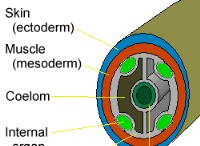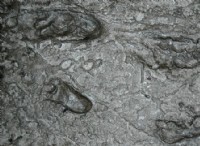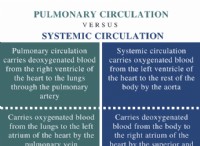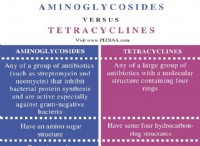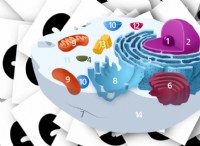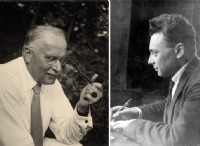시간. 연필이 내려갑니다. 한 국가로서, 우리는 시험에 땀을 흘리며, 실적이 저조한 학교, 표준 및 커리큘럼을 해부하고 헹구고 반복했습니다. 우리는이 문제에 교실 데스크 의자를 던졌으며 수학 및 과학 문해력과 관련하여 C- 미니보다 더 나은 수익을 얻지 못했습니다. 테스트는 완벽하지는 않지만 2012 년 국제 학생 평가 프로그램에 따르면 15 세의 미국인은 수학 27 위, 경제 협력 및 개발기구의 34 개 회원국 중 20 위를 차지했습니다. ( 12 월 6 일 업데이트 : 오늘 발표 된 2015 년 평가에서 미국은 과학에서 19 위, 35 개 OECD 국가에서 수학에서 31 위를 차지했습니다.)
퍼즐은 상태의 중첩으로 지속됩니다. 표준이 너무 낮거나 도발적으로 너무 높습니까? 우리는 어떻게 학교에 적절하고 공평하게 자금을 지원합니까? 올바른 순서로 올바른 물건을 가르치고 있습니까? 아니면 문의 과정에 더 가깝습니까? 표준화 된 테스트는 테스트 산업 외에 누구나 도움이됩니까? 전통적인 교실은 학습에 도움이됩니까? 기술을 추가하거나 빼야합니까?
이러한 문제는주의를 요구합니다. 그러나 테스트 점수와 새로운 표준에 대한 대중의 손이 짜여져있는 중 하나의 변수는 아마도 가장 중요한 일입니다. 학습에 대한 식욕과 감사를 부여하는 오류가있는 인간. 이 Linchpin of America의 비잔틴 교육 시스템에서 주목을 받으려면 Quanta Magazine 4 명의 마스터 과학과 수학 교사를 교실로 갔다. 다음은 그들의 이야기입니다.
시도
5 월 23 일 월요일 아침 일찍, Uptown 5 열차는 지하 샤프트에서 하늘을 바르고 브롱크스의 빛으로 올라갑니다. 자동차는 트리 탑, 녹슬 힌 저층 화재 탈출의 에스 체와 같은 미로와 함께 애비뉴, 보데 가스 및 분리 된 주택 위로 높은 트랙 위로 목을 가로 질러 신음합니다. 12 명은 나중에 멈추고, 줄의 끝을 부끄러워하고, 남은 라이더는 베이체스터 애비뉴로 돌아 다니고 있습니다. 언덕 위로 베이체스터 중학교의 고향 인 삼각형 천막이있는 쪼그리고 앉는 체커 패턴 건물이 있습니다.
종은 불이옵니다. Channa Comer는 아이들이 일찍 그리고 종종 대학에 대해 생각하게하도록 지명 된“Cornell University”홈룸의 위층에서 큰 목소리와 더 큰 Cheshire Cat 미소로 학생들에게 연설을합니다.“Cornell, 10 초, 숙제를 꺼내기 위해 10, 9, 8…”학생들은 배낭을 휘두르면서 모두 공포를 가지고 앉을 때까지 스크램블링합니다. 그들은 모두 등을 가로 질러 큰 흰색 문자로 푸른 학교 발행 셔츠를 입습니다. 일년 내내, 그들은 신뢰, 훈련 또는 감사하는 편지로 셔츠를 얻습니다. 오늘 셔츠는 시도해보십시오.
그들 주변에는“생명은 복잡합니다 :그것을 다루겠습니다”,“양성자처럼 생각하고 긍정적으로 생각하십시오”라고 조언하는 포스터를 포함하여 시도해보십시오. 교실 앞에서 하루 일정이있는 화이트 보드 위에 인쇄 된 것은 정의와 함께 "매개 변수", "구문"및 "데이터 유형"과 같은 어휘 단어가 있습니다. 방 뒤쪽의 선반에는 소나무 콘과 껍질이 담긴 투명 용기가 있습니다. 아래는 퇴비, 토양, 식물, 암석, 불가사리 및 안전 고글 용 용기입니다.
Comer는 2 인치 높이의 플랫폼 샌들에 5 피트 1에 서서 크기가 큰 존재를 계획합니다. 그녀의 목소리는 쉽게 방을 채우지 만, 엄마를 느슨하게하거나 학생의 칭찬을 부르지 않는 것을 제외하고는 거의 방을 키우지 않습니다. Comer는 수년간의 무술과 마라톤 훈련에서 나오는 운동 빌드를 가지고 있으며, 아마추어 경쟁 보디 빌딩은 말할 것도 없습니다. 자연스럽게 호기심 많은 일련의 커리어 체인저 인 Comer는 간호 학생으로 고급 생물학 과정을 수강했고, 그룹 주택의 건설을 조정하는 직업을위한 물리학 및 공학을 공부했으며, 교사가 된 후 여러 여름 휴가를 과학 분야 연구를 수행했습니다.
.Comer는 수업 후“과학과 관련이없는 것은 없습니다. "학생들이 주변의 세상이 어떻게 기능하는지 알고 있다는 것이 매우 중요합니다."
그러나 학습 과학은 다른 언어를 배우는 것과 같으며 베이체스터 학생들의 10 %만이 학년 이상에서 영어를 읽습니다. 복잡한 문제로, 초등학교 교사들은 과학을 가르치는 관심사 나 능력이 크게 다릅니다. 아이들이 Comer의 6 학년 수업에 도착할 때, 일부는 과학이 거의 없었으며, 일부는 교과서 만 읽었으며, 다른 일부는 전체 실험을 해왔습니다. 그녀는 중학교 차원에서도“과학은 시험으로 인해 우선 순위가 아닙니다. 수학과 [언어 예술]의 높은 지분은 아이들이 홍보하는 것과 교사들이 평가에 따라 평가되는 것입니다.”
.더욱 복잡한 문제, 학교는 42 건의 건물, 2,000 개의 아파트 및 갱 폭력의 역사를 가진 자치구 최대의 공공 주택 단지 맞은 편에 있습니다.
Comer는 비디오, 노래를 포함하여 모든 것을 사용합니다 (그녀는 학생들이 박수를 치르고 노래합니다.“S-C-I-E-N-C-E, 과학자들은 우리가해야 할 것입니다! 해결. 조사. 조사. 평가. 통지. 모든 어린이는 자신의 수준에 따라 어떤 접근 지점을 얻습니다.” 그녀의 교훈을 통해 그녀는 학생들에게 반사성 긴급 성을 심문합니다.“당신의 증거는 무엇입니까? 키커가이어서“어떻게 아십니까?” 그런 다음 실습 실험을 통해 의미를 강화하고 경이로움을 불러 일으 킵니다.
그러나 2007 년에 그녀의 교직 경력을 시작했을 때, Urban Assembly Of History of History and Citizenship이라는 소규모 브롱크스 고등학교에서 문을 닫은 젊은이들을위한 시민권이라는 소규모 브롱크스 고등학교에서 많은 저녁을 보내면서 침대에서 태아의 위치로 울부 짖었습니다. "나는 후프를 뛰어 넘고 머리에 서서 아이들을 관심을 갖기 위해 노력하고있었습니다."라고 그녀는 말했습니다. "매일 집에 돌아와서 방금 전투를 한 것처럼 느꼈습니다." 그녀는 인체에서 유닛을 시작한 것을 기억하면서“모두가 자신의 몸에 대해 알고 싶어합니다.”라고 생각합니다. 그녀는 한 학생이 말했을 때 눈을 멀게했습니다. 그녀는 아이들이 과학에 대해 흥분 할 수있는 낮은 등급으로 떨어질 필요가 있다는 것을 알았습니다.
Comer는 6 학년 수준에서“학생들이 모든 것을 기억하거나 정보를 역류 할 수 있다고 걱정하지 않습니다. 나는 그들이 실제로 수준의 참여를 가지고 있다면 모든 견과류와 볼트를 배울 것이라고 생각합니다.”
.
고등학교 수준에서 4 년 후 Comer는 Baychester에서 6 학년 과학 교사가되었습니다. 학교의 창립 교장 인 Shawn Mangar는 곧 Comer가 고용 된 직후에 그녀는 수년 동안 구입 한 과학 자료가 장착 된 U-Haul에 나타 났으며“당신은 심각합니까?”라고 말했다. 보안 직원으로부터. 그리고 작년에, 그녀는 여자 친구에게 균열 코카인을 만드는 방법을 가르치는 남자에 대한 모든 아이들이 노래하고있는 인기있는 랩 노래를 가져갔습니다. 배경 음악을 발견하고 학생들이 과학 내용으로 가사를 다시 작성할 수있는 경쟁을 조직했습니다. 수상 경력에 빛나는 학생들은 컬럼비아 대학교의 과학 천재 경쟁에서 물주기에 관한 리메이크를 공연했습니다. Comer는 또한 Secme Consortium of Universities의 자금을 조달 한 방과 후 공학 클럽을 시작했으며 나중에 NASA로부터 2,500 달러의 혁신 보조금을 받았습니다. Mangar는“그런 종류의 일이 일어나고 있습니다
Comer는 또한 학생들이 자신의 문제를 해결한다는 독창적 인 주장으로 유명합니다. 엘리자베스 리 벤스 (Elizabeth Leebens) 부통령은 종종 너무 자주 학생들은“과학의 역사를 스스로 할 수있는 기회를 얻기보다는 과학의 역사를 얻는다”고 말했다. 그럼에도 불구하고 Leebens는 과학 클럽 그룹이 Comer에게 이미 7 번의 끈적 끈적한 시간에 실패한 아이스크림 제작 실험에 도움을 요청한 후 놀랐습니다. Comer는 그들에게“돌아가서 과정을 확인하십시오”라고 말했습니다. 그들은 최신 배치를 버리고 다시 시작하기 위해 화장실에 갔다.
Comer는“저는 그것을 생산적인 투쟁이라고 부릅니다. "그것이 성장이 일어나는 곳입니다."
Leebens는 회의에서 Comer는“아이들을위한인지 적 사업을 중단하도록 도전했다고 말했다. 그들은 할 수 있습니다. 그녀는 Comer에게“성인이 할 수있는 일을 결정하기 전에 그들이 할 수있는 일을 볼 수 있도록 아이들에게 인생의 교훈과 높은 기대치에 관한 것입니다.”
.Baychester 학생들에게 그들이 할 수없는 일을 알려주는 모든 메시지가 있으면 Comer는 포기하지 않을 것이며, 그녀는 스스로 포기하지 않을 것입니다. “이것은 내 아이들입니다.”그녀가 말했다. "이것은 내 커뮤니티입니다."
투쟁
5 월 25 일 수요일, East Side Community High School에서 Soni Midha는 맨해튼의 거리에서 수업을 위해 10 학년 지오메트리 클래스를 가져 와서 East 12th Street와 First Avenue 주변의 건물 높이를 측정합니다. 학생들은 쓰레기, 개 주자, 자전거 타는 사람, 건축, 열파, 택시 및 그의 관심의 대상으로부터 간결한 견책을 얻는 고양이 가우 커의 많은 장애물에 직면합니다. "왜 나를보고 있습니까?" Nasifa, 17.“저는 미성년자입니다!”
교실로 돌아가서, 장애물은 학생들이 이스트 사이드에서 알려진 것을“투쟁 문제”로 다루기 때문에 더 철학적입니다. 실제 투쟁 - 문제와 함께 어려움을 겪는 경험은이 고등학교에서 학습 과정의 전형적인 부분이며, 모든 교실에는 사회 개혁가이자 폐지 주의자 프레드릭 더글러스를 인용하는 모든 교실에 포스터가 있습니다.“투쟁이 없다면 진보는 없습니다.”
.첫째, 학생들은 수집 한 데이터를 고려하는 데 어려움을 겪고 있습니다. 현장 작업 중에 그들은 각각 관찰자 또는 워커 또는 레코더의 역할을 맡았습니다. 관찰자는 선택한 건물에서 길 건너편에있는 지점에 서있었습니다 (인기있는 선택에는 피자 가게와 마카로니와 치즈 레스토랑이 포함되었습니다). 두 개의 iPhone 앱을 사용하여 건물 A에서 건물 상단까지의 고도 각도와 워커가 건물 바닥에서 A 지점에서 B 지점으로 이동하는 거리를 측정했습니다. 이 두 가지 측정은 올바른 삼각형에 대한 중요한 정보를 제공했으며, 그곳에서 삼각법에 대해 지금까지 배운 내용을 사용하여 건물의 높이를 계산하는 작업으로 청구되었습니다. 그러나 먼저, 지우개 먼지 깃털 속에서, 으르렁 거리는 소리, 그리고 퍼지의 집단적인 버즈 속에서 뿌려진 쳐다보고, 눈살을 찌푸리고, 다이어그램이 그려지고, 다시 그려져 있습니다 :
“나는 몰라. 정말 모르겠어요.”
"돕다! 도와주세요!”
그러나 그들은 선생님들로부터 많은 도움을받지 못할 것입니다.
“저는 그들에게 답을주지 않은 선생님입니다. “우리가하는 모든 부대에서 나는 그들에게 다음과 같이 경고합니다.``필요한 도구를 제공 할 것이지만, 무언가를하는 방법을 결코 말하지 않을 것입니다. 당신은 그것을하는 방법을 알아 내야하고, 당신은 대답을 알아 내야하며, 당신이 왜 그 대답이 그것이 무엇인지 생각하는지 나에게 증명해야합니다.”그녀는 또한 종종 반복되는 만트라를 통해 안심을 제공합니다. 당신이 계속 인내한다면, 당신이 계속 시도한다면, 당신이 이것을 계속 진행한다면, 당신은 이것을 얻게 될 것입니다. 그러나 포기하면 실패 할 것입니다.”
Midha는 항상 수학을 좋아했습니다. 쉽게 왔습니다. 그녀는 블랙 보드에서 표준“분필과 대화”를 한 대수 교사 덕분에 10 학년의 능력에 대한 의문을 겪었습니다. 그러나 Wesleyan University에서 신입생 한 해 동안, 그녀는 수학을 예술로 간주 한 교수와 미적분학을 받았습니다. 그녀는“그가 말한 모든 것이 너무 심오했다”고 회상했다. “저는‘오, 내 신입니다. 이것이 가장 멋진 것입니다.””그리고 그게 그게 그게 그랬습니다. 그녀는 수학 전공이되었고 음악 전공이되었습니다. 그녀는 클래식 기타를 연주합니다.
Midha는 중학교 학생들을위한 여름 세션에서 음악, 수학, 스페인어 및 웹 디자인에서 수업을 한 후 여전히 대학에있는 동안 교사가되기로 결정했습니다. 그녀는 Fast-Track New York City Teaching Fellows 프로그램을 신청했으며 대학에서 직접 Brooklyn의 학교에서 시작하여 동시에 강의 석사 학위를 받았습니다. 그녀는 4 년 동안 가르친 후 2 년 동안 우회하여 인도의 패션 하우스에서 마케팅 및 홍보에서 일하고 있습니다. 그녀가 집으로 돌아 왔을 때, 그녀는 아이들을 그리워한다는 것을 깨달았습니다. "그런 다음 이스트 사이드를 발견했는데‘이게 다야’와 같았습니다. 이곳은 특별한 곳입니다."
East Side Community High School은 1992 년에 개장했으며 1970 년대에 거슬러 올라가는 작은 대체 도시 고등학교의 두 번째 물결의 일부인 1992 년에 문을 열었습니다. 그것은 성과 기반 평가에 유리한 한 크기의 모든 표준화 된 테스트에 반대하는 뉴욕의 성과 표준 컨소시엄의 일부입니다.
"Heart By Heart"라는 제목의 최근 학교에 대한 사례 연구는 East Side를 학문적 엄격함과 학생들과의 개인적인 관계의 결합 된 우선 순위로 인해 성공하는 장소로 설명합니다. 학생들은 2012 년에 이스트 사이드가 얼마나 특별한 지에 대해 감사하게 생각했습니다. 관리인이 학교의 90 세의 벽돌 외관이 강철 프레임에서 분리되고 있음을 알게되었으며, 비상 대피와 5 개월간의 비인간 학교로의 5 개월간의 이주가 필요합니다. 이스트 사이드에는 대조적으로 많은 사랑이 있습니다. “선생님들은 우리 아이들을 사랑하고 아이들은 우리를 사랑합니다.”라고 일부 학생들의 다른 부모와 같은 Midha는 말했습니다. 학교는 6 학년에서 12 학년에 서비스를 제공하며 대부분의 학생들이 로어 이스트 사이드에 사는 다양한 학생들을 끌어들입니다. 학생 단체의 절반 이상이 히스패닉이고 약 1/4은 아프리카 계 미국인입니다. 약 1/4은 특수 교육을받습니다. 그러나 100 %는 학습의 수단으로 문의에 의해 통제됩니다.
투쟁 문제의 2 일째 날, 슬랙스와 티셔츠를 입은 미다 (Midha)는 영원한 움직임을 유지할 수있는 티셔츠와 뉴 밸런스 러너를 학생들에게 선택한 정보와 교육 만 제공합니다.
"나는 당신의 투쟁 문제에 대한 힌트 하나를 당신에게 줄 것입니다."라고 그녀는 말합니다. “여기에 내가 당신에게 줄 힌트가 있습니다. 목표는 건물의 총 높이를 찾는 것입니다. 전체 높이. 총 높이.
“기억하십시오 :고도 각도는 어디에서 측정 되었습니까? 눈. 당신이 그림을 그리고 계산할 때, 그것을 기억하십시오. 당신의 임무는 건물의 총 높이를 계산하는 것입니다. … 기억하십시오 :우리가 눈 높이를 측정 한 이유가 있습니다. 눈 높이를 측정 한 이유가 있습니다.” 반복과 더 많은 반복은 청소년 뇌를 관통하는 데 핵심입니다.
Midha는 또한 학생들에게 눈 높이를 인치로 측정하고 건물 거리를 몇 마일로 측정했으며 워크 시트가 건물의 높이를 요구한다고 학생들에게 지적하면서 보너스 힌트를 제공합니다. 그것으로, 그녀는 학생들을 자신의 장치로 맡깁니다.“행운을 빕니다!”
그녀는 방을 돌면서 진행 상황을 조사하고 간단히 물었다.“어떤 의미가 있습니까? … 왜 말이되지 않습니까?” 그녀의 힌트에도 불구하고, 눈 높이의 관련성은 애매 모호하고 인치 피트 마일 전환이 혼란 스럽습니다. 그녀는 그룹과 일대일로 팁을 반복 한 다음 다시 느슨하게 할 수있게 해주었습니다.
“아니, 돌아와!” 파비안은 연필을 좌절 시켜서 눈으로 뒤집는 것을 간청합니다.
Midha와 그녀의 동료 이스트 사이드 수학 교사들은 최근 생산 수학 토론을 조율하기위한 5 연습을 읽었습니다 , Margaret Schwan Smith와 Mary Kay Stein. 그들은 금요일 회의에서 챕터별로 해부하고 논의했습니다. Midha는“이것은 엄격한 증가, 비율 증가 및 아이들과의 대화에 관한 아이디어에 관한 것입니다. “비율”은 학생들이 스스로하는 발견과 학습의 양과 교사로부터받는 명시 적 플레이 별 수업의 양을 나타냅니다. Midha는“기본적으로 생각 비율입니다. "아이들은 선생님이 아니라 생각을해야합니다."
아이들이 생각하도록 영감을 주면서 지적 관성에 대한 성향과 싸우면 세밀하게 조정 된 오케스트레이션이 필요합니다. 이 책의 5 가지 관행은 학생들이 문제를 해결하려고 시도하고, 어려움과 발전으로 작업을 모니터링하고, 수업과 공유 할 다양한 학생들의 접근 방식을 선택하고, 논리적 인 방식으로 공유 아이디어를 시퀀싱하고, 커리큘럼의 전반적인 목표에 연결하는 방법을 기대합니다. Midha가 한 그룹에서 다음 그룹으로 라운드를했을 때,이 요인들은 분명히 이야기를 나누었습니다. 그녀는 대화를 따라 부드럽고 의도적으로 동축되어 아이들을 돌파구로 향하게했습니다. "아하 순간이있을 때는 매우 강력합니다."라고 그녀는 말했습니다.
수학을 싫어했던 16 세의 사바나 (Savannah)는“어깨의 무게가 아니라 머리 속의 어깨에서 무게가 무게가 나옵니다. "갑자기 약을 복용 한 것과 같은 것 같은데, 긴장을 풀고 투쟁이 사라지고 진실을 깨닫습니다. 당신은 투쟁의 진실을 깨닫습니다."
.실패
5 월 27 일 금요일, 보스턴의 서쪽 서쪽 교외에서 Aaron Mathieu는 Acton-Boxborough 지역 고등학교에서 고급 배치 생물학 학생들에게 실험실 실험을 소개합니다. 42 세의 Mathieu는 소년 외모와 번갈아 소리를 내고 느긋하게 들리는 목소리를 가지고 있습니다. 그의 학생들은 그룹으로 흩어져 썩어서 채팅했습니다. Mathieu는 테스트 튜브를 준비하라는 알림으로 그들을 고쳐줍니다. 그런 다음 그는 고등학교 물리학 교사로부터 태어난 애정이 많은 용어 인 학생들을 체로라고 부르며 편안합니다. (그는“남자들”과 달리“모든 사람을 동등하게 불쾌하게한다”고 말했다. 그는 다른 학급에서는 다른 학급에서는 눈 의사가하는 일을 배우기 위해 최근의 경력 견학에 대해 말장난을 회상한다 (“방문은 눈에 띄게 열렸다”). 그의 학생들은 선생님에게 재미를 찌르고 그를 괴상하다고 부릅니다.
6 년 전, Mathieu는 그의 명예 생물학 수업에서 위험한 프로젝트를 시도하기로 결정했습니다. 학생들은 학교의 근거에서 벌레를 모아서 갈아서 DNA를 추출 할 것입니다. 그런 다음 곤충의 생식 관에 사는 특정 유형의 박테리아에서 DNA를 분리하려고합니다.
실험은 복잡했고 Mathieu와 두 명의 동료 교사들은 2 년 동안 그것을 털어 내고 시도할지 여부를 결정하려고 노력했습니다. 그들은 분자 생물학적 개념과 기술을 과학의 실제 실천과 결합했기 때문에 프로젝트에 끌렸다. 실험이 성공적이면 학생들은 새로운 발견을 할 가능성이있었습니다. 박테리아의 새로운 균주를 발견합니다. 그러나이 프로젝트는 화려한 실패로 판명 될 수 있습니다. “우리는 교사로서 어떻게 느끼는지, 그리고 학생들 이이 모든 새로운 실험 단계에 5 일을 보냈다면 어떻게 느끼는지 걱정했다” - DNA를 추출하고, 복사 시퀀스를 복사하고, 분리하고, 데이터를 시각화하는 것 - 아무것도 보지 않고 보지 못했다고 Mathieu는 말했다.
.생물학 커리큘럼의 기존 실험실 프로젝트의 대부분은 초보자 요리 책의 레시피처럼 설계되었습니다. 예측 가능한 결과는 거의 항상 계획대로 나왔습니다. 그러나 Mathieu는 학생들을 과학의 본질, 즉 탐험 의식, 발견의 최고 및 실패의 도전에 노출시키기를 원했습니다. 그렇게하기 위해 그는 안전망을 제거해야한다는 것을 알았습니다. "혁신을하려면 위험을 감수하고 아이들이 위험을 감수하는 상황에 처하게해야합니다." 효과가없는 실험실에서 일주일을 보내면 제한된 시간과 기타 자원을 낭비하고 학생들을 낙담시킬 위험이 있습니다. Mathieu는“우리는 모든 사람, 교사 및 학생들이 데이터를 성공적으로 생성하지 않더라도 프로젝트를 시도함으로써 많은 것을 배울 것이라는 것을 깨달았습니다. "나에게 시간 낭비는 학생들이 경험에서 배우지 않은 경우입니다."
Wolbachia의 첫 번째 시도 실험실은 Mathieu와 그의 동료들이 두려워했던 것처럼 끝났습니다. 일주일의 피펫 팅, 원심 분리 및 신중한 메모를 마친 후 한 그룹의 학생들을 제외한 모든 학생들은 빈 젤을 가지고있었습니다. 학생들은 자신의 실수에만 초점을 맞추고 프로젝트가 완료되었을 때 명확한 답변이 부족하여 혼란 스러웠습니다. 그러나 Mathieu는 그 반응을 사용하여 그의 교수 철학을 형성했습니다. "나는 그것을 과학의 과정에 대해 충분히 배우지 않는 표시로 받아 들였다"고 그는 말했다. "그것은 우리가 커리큘럼 전체에 과학 과정을 포함해야한다는 것을 의미했습니다."
Mathieu는 학생들과 실험실을 해부하는 데 시간을 보내면서 그들이 어디에서 잘못되었는지 알아 내려고 노력했습니다. 그는 학생들이 실험 제어에 대한 깊은 이해가 부족하다는 것을 깨달았으며, 이는 과학자들이 결과에 책임이있는 변수를 격리시키는 데 도움이됩니다. 이 실험에서, 대조군은 분자 생물학 키트로부터의 일부 미리 메이드 DNA였다. 학생들은 곤충과 키트에서 DNA를 증폭 시켰습니다. 곤충과 대조군 DNA 모두에 대해 증폭 과정이 실패한 것으로 밝혀졌으며, 이는 그것이 문제의 원천임을 시사한다. Mathieu와 그의 학생들은 프로세스를 개선했으며 이제는 더 잘 작동하지만 여전히 완벽하지는 않습니다. Mathieu는“올해의 한 수업은 놀라운 데이터를 가지고 있었고 한 수업은 거의 아무것도 없었습니다.
6 년 후, 과학 과정은 Mathieu 교육의 필수 부분이되었습니다. 여러 종류의 학생들이 성공적인 결과로 곤충 실험실을 수행했습니다. 그러나 아마도 더 중요한 것은 결과가 잘못되면 결과를 더 잘 분석 할 수 있다는 것입니다. Mathieu와 그의 학생들은 일년 내내 실험 설계의 제어 및 기타 측면의 중요성에 대해 논의하며, 학생들은 이제 자신의 실험을 설계합니다. 그들은 생쥐가 땅콩 버터 또는 누텔라를 선호하는지 테스트했습니다. (마우스는 누 텔라를 향한 애매 모호합니다.) 그들은 잔디밭을 태워 화재 후에 초원이 더 잘 자라는 지 탐색했습니다. (물론 부모의 감독으로) 그들은 식물이 알루미늄, 니켈 및 납에 어떻게 반응하는지 분석했습니다. Mathieu는“학생들은 질문을하고 선택을하기 위해 질문을해야합니다. "실제로 과학을하고 있다면 어느 정도의 선택과 통제가 필요합니다."
“Aaron의 목표는 학생들이 교실에서 실제 과학을하는 것입니다. 시뮬레이션을 수행하거나 답을 알 수있는 실험실을 수행하는 것이 아닙니다.

20 년 동안의 베테랑 인 Mathieu는 10 년 전 국가위원회 인증을받은 후 주현절을 경험했습니다. 그는 첫 10 년간의 가르침을 반영하면서 자료를 제시하는 방법을 알아내는 등 가르침 기술에 많은 시간을 보냈다는 것을 깨달았습니다. "나는 실제로 나 자신을 생물학 교사로 생각하지 않았지만 교사로서 더 많이 생각한다"고 그는 말했다. “그러나 나는 과학이 얼마나 많은 과학을 가르치고 있는지 궁금해하기 시작했습니다. 과학의 과정과 과학의 본질을 제시하고 있었습니까, 아니면 과학의 역사를 발표하고 있었습니까? 나는 과학이 책에서 많은 사실이라는 생각을 강화하고 있었습니까?” 얼마 지나지 않아 Mathieu, Dempsey 및 다른 교사는 과학의 경험을 교실로 가져 오는 방법, 곤충 실험실에서 절정에 이르는 과정을 브레인 스토밍하기 시작했습니다.
Mathieu는 과학 과정을 가르치는 데있어 필수 요소, 특히 신입생을위한 필수 요소는 학생들이 좌절을 다루는 방법을 배우도록 돕고 있다고 말했다. 그는 한 명의 명예 학생이 어떻게 그녀의 생물학적 성적에서 울부 짖는지를 회상합니다. "이것은보기 어려운 감정입니다." "모든 사람이 어려움을 겪고 혼란을 다루는 법을 배우는 사회적, 감정적 인 장소에있는 것은 아닙니다."
.그는 울부 짖음을 지나서 일하면서 학생들과의 관계를 키 웁니다. 수업으로서, 그들은 과거의 도전과 패배, 그리고 시험이나 실험실에서 어려움을 겪는 것이 무엇을 의미하는지 논의합니다. 그는 다른 방식으로 학생들에게 연락을 취하고 수업 후 그들과 대화하거나 이메일을 통해 토론에 참여합니다. 그는 특정한 학생이 특정 개념으로 어려움을 겪고 있으며 학생이 앉아서 그것에 대해 이야기하고 싶어하는지 묻습니다. 그는 또한 과학 이외의 주제에 대해 학생들과 교류합니다. "가능할 때마다 학생들과 비공식적 인 대면 대화를하려고 노력합니다." "그룹이 일찍 끝났다면 게임이나 다른 이벤트에 대해 이야기하기 시작할 수도 있습니다. 그 대화에 참여할 것입니다."
.결과적으로, 학생들은 플롭이 플로링하는 실험을 다루는 법을 배웠으며 과학에서 실패는 막 다른 곳과는 거리가 멀다는 것을 이해했습니다. 그 자체로 결과입니다. Mathieu는“2 주가 끝나면 젤을보고 아무것도 볼 수 없을 것입니다. 과학에서 일어나는 일이기 때문에 괜찮습니다. 실험이 시간 낭비라고 생각하는 대신, 무엇이 잘못되었는지 알아 내려고 노력할 것입니다. 실험의 어느 부분이 실패 했습니까? 다음에 어떻게 개선 할 수 있습니까? 어떤 학생들은 실험을 다시하기 위해 수업 후에 돌아 오는 일을 알아 내기 위해 너무 이끌립니다.
참여
같은 금요일 일찍, 두 남자가 베이체스터 중학교에서 한 단계 만에 차에서 총에 맞았습니다. 둘 다 근처의 자코비 의료 센터로 이동하여 죽습니다. 범죄 현장 부대는 Baychester Avenue에서 봉인됩니다.
수업 일은 평소와 같이 시작됩니다. 점심 식사 후,“UC San Diego”홈룸의 학생들은 Comer 's Classroom for Science에 도착합니다. “좋은 오후, 샌디에고”라고 그녀는 말했다
“좋은 오후, 콤머 양!”
Comer는“우리는 장난감 자동차 실험실을 계속할 것입니다. 그녀의 간단한 대형 유닛의 하이라이트 인 Lab은 경사로를 구축하고 경사로를 다른 재료로 덮을 때 장난감 자동차가 얼마나 빨리 굴리는 지 테스트하는 것이 포함됩니다. "장난감 자동차 실험실에서 우리가 공부하는 개념은 무엇입니까?"
Mylani는 그녀의 손을 들었다. “마찰.”
"마찰이란 무엇입니까?" Comer는 묻습니다. 몇몇 학생들은 부분적인 답변을 제공합니다. “우리는 그것이 힘이라고 말했고, 표면과 관련이 있어야한다고 말했습니다. 누가 하나의 깔끔한 패키지로 합류 할 수 있습니까?” 다시 시도한 후, 그녀는 처음에는 그녀와 어울리지 않았지만 이제 그녀의 최고 학생 중 한 명인 Cameron에게 전화를 걸었습니다.
.Cameron은“이것은 물체를 쉽거나 어렵게 만드는 두 표면 사이의 힘입니다.
곧 학생들은 그룹으로 윙윙 거리고 역할을 정의하고 경사로에 올릴 커버를 결정합니다. Comer는 자신의 진행 상황을 모니터링 할 때 개별 학생들에게 이해를 측정하도록 조사합니다. "자동차 속도가 왜 종속 변수입니까?" 카메론의 팀원 중 두 명은 경사로의 덮개에 의존한다고 올바르게 설명합니다. 그런 다음 :“독립 변수는 무엇입니까?”
진심으로 대답합니다. 그와 다른 소년 스포츠 트레인 트레인 오렌지 문자로 베이체스터 블루 헤드 밴드.
"실험의 통제는 무엇입니까?" Comer는 묻습니다. 이것은 그룹을 그루터기합니다. "음, 통제는 무엇입니까?" 그녀는 prods. 빈 쳐다보고. 그녀는이 개념을 전체 수업과 검토하기로 결정합니다.
그녀가 모든 사람이 기본 사항을 어지럽히는 것에 만족하면 아이들은 재료를 모아 경사로를 건설하러갑니다. 교실은 건축 구역이됩니다. 교장 인 Shawn Mangar는 학교에서 가장 큰 소리로 Comer 's Class를 가장 크지 만 올바른 이유로 시끄 럽습니다. 학생들은“지적 혼란”에서 생각하고 배우고 있습니다.
Shomari는 수업 후“올해 초에 과학에 관심이 없었기 때문에 과학에 관심이 없었습니다.”라고 Shomari는 수업 후에 말했습니다. 그러나 그녀는 이제“과학에 대해 내가 좋아하는 것은 다른 것들을 실험 할 수 있고 다른 사람들의 의견에 도전 할 수 있다는 것입니다.”
.마찬가지로 카메론은 그의 구식에서“우리는 교과서와 내용을 읽습니다.”라고 말했습니다. 그는 실습 프로젝트와 Comer가“사물에 더 깊이 들어가는”사실을 좋아합니다. 지난 겨울, 땅에 얼음이 있었을 때, 그는 마찰과 미끄러지거나 떨어지지 않도록 발을 어디에 두어야하는지 생각했습니다. "나는 그녀가 가르치는 방식이 마음에 든다"고 말했다. “그녀는 결코 서두르지 않습니다. 우리는 단지 시간이 걸립니다.”
학교 창립자들은 과학이 베이체스터에서 초점이 될 계획이 없었습니다. Mangar는 Comer를 인정하면서“우리는 그것이 그랬던 방식대로 이륙 할 것으로 기대하지 않았다. "학생이 2 ~ 3 개의 수업에서 어려움을 겪고있는 것을 볼 수 있으며 갑자기 과학 수업의 록 스타입니다."
모델
Michael Zitolo는 5 월 12 일 목요일에 School of the Future에서 Midtown Midnown and High School에서 Midtown Mindown 맨해튼 기지에서 11 층으로 올라가는 Physics 1 Class를 지시합니다. “이런 식으로 돌아올 수 있습니까? 대니, 당신은 조금 더 가까이오고 싶을 것입니다. 나는 샤워했다; 너무 냄새가 나지 않습니다.”
학생들은 선생님 주변에 모입니다. 대머리와 수염, 그리고 항상 과학 테마 넥타이를 착용 한 Zitolo는 두 개의 윈드 업 장난감, 차와 오리를 보냅니다.
"이 Windup 장난감 중 하나를 정리 할 때 아무도 이러한 것들 안에 무엇이 있는지 아는 사람이 있습니까?" 그는 묻습니다.
“봄!”
Zitolo는“봄이나 일종의 탄성 고무 밴드 재료 일 수 있습니다.
Zitolo가 신중하게 선별 한 것은 한 달 동안 에너지의 첫날입니다. 학생들은 에너지가 한 유형에서 다른 유형으로 변형되는 방식에 익숙해지기 위해 시연, 생각 실험 및 비디오 클립을 통해 일련의 막대 차트에서 이러한 변경 사항을 그래프하는 연습을합니다.
.“빠른 면책 조항 - 엔지니어는 실제로이 막대 차트를 분석에서 사용합니까? Zitolo는 말합니다. “그들은 에너지 변환이 어떻게 발생하는지에 대한 깊은 이해를 가지고 있기 때문에 머리 속에서 이것을합니다. 우리는 머릿속에서 이러한 일을 편안하게 할 때까지 지금 종이 로이 작업을 수행하고 있습니다. 그리고 이것들은 실제로 수학적 모델을 만들기위한 우리의 런칭 포인트가 될 것입니다.”
.This evening, the students will write a one-page “mastery reflection” on using bar charts to model energy transformation. And through further experimentation in the weeks that follow, they will develop mathematical abstractions or “models” that describe energy’s behavior, essentially deriving for themselves the equations that most physics students memorize from textbooks. Called “modeling instruction,” it’s a pedagogical approach that is surging in popularity among physics teachers. Modeling instruction won the 2014 Excellence in Physics Education Award from the American Physical Society and has been shown to yield higher scores than traditional courses on the force concept inventory, a test that gauges students’ conceptual understanding.
But Zitolo did not always teach this way. When he first entered the profession — and his seventh-floor classroom at School of the Future — almost 10 years ago, he felt as though he was drowning in a sea of concepts. He was somehow supposed to instill a thorough knowledge of forces, kinematics, energy, electricity, magnetism, waves, modern physics and more in students whose prior notion of physics consisted of the word “gravity.” He couldn’t keep up. And the students who passed through his class rarely went on to study science or engineering in college.
Meticulous about everything from beard trimming to his annual go-for-broke Halloween costumes (which earn him schoolwide respect), Zitolo was obsessed with self-improvement. “I was of this mind that there is a perfect way to teach physics, and I just have to figure out what that perfect way is,” he said. “I was very hard on myself my first couple of years. I literally, one year to the next, could not look back to what I did in previous years, I thought it was so horrible.”
The biggest breakthrough came the summer before Zitolo’s fifth year of teaching, when he attended a three-week workshop on modeling instruction. Mark Schober, a physics teacher and former president of the American Modeling Teachers Association, called modeling “a grassroots movement” that grew in the 1980s largely out of the classroom practices of an Arizona physics teacher named Malcolm Wells. The movement has expanded to 78 workshops this past summer; as of 2015, more than 10 percent of the nation’s physics teachers had attended one. In modeling courses, instead of first teaching physics concepts in the abstract and then connecting them to the real world through labs, teachers have students experiment with model systems — a windup toy, for instance, or a cart held by a pulley at the top of a ramp — and guide them as they develop mathematical models of the systems, which they can then apply to other problems and settings. Modeling instruction is “a lot of Jedi mind tricks,” Schober said. “How do we shape students’ thinking without them knowing we are? We want them to feel the idea is really theirs — they came up with it.”
Modeling is not a one-size-fits-all teaching method, but is rather tailored by teachers to suit their individual styles and skills. Zitolo, who has an engineering bent, casts his modeling unit on energy as a project to design a roller coaster. In class on May 12, he asks students to imagine dropping a ball from the top of the school building. When the ball hits the ground, he explains, the friction converts some of the ball’s kinetic energy into thermal energy — a form they were supposed to have read about the night before. “Why does this matter?” Zitolo says. “Roller coasters. Even though the tracks are designed to be super smooth, and even though they are supposed to be streamlined to reduce drag, there is going to be drag; there is going to be friction. You guys are going to have to account for that when you design your roller coasters.”

Like East Side Community High School, School of the Future has opted out of the statewide Regents examinations, and this has facilitated Zitolo’s switch to modeling. Student-run experiments and data analyses take longer than lecturing, and so modeling courses typically cover less ground than a traditional physics curriculum. But Zitolo has found that, compared to skimming a sea of concepts, deeper dives instill a deeper appreciation for physics — even in students who are destined for other vocations.
“I’m going for public communications, not anything to do with physics,” said Nikki, who graduated in June and now attends Syracuse University. “But being in Z’s class — it really has opened my mind to, like, wow, this is cool, I get to build things, I get to see how things affect one another.”
Zitolo, now 32, made up his mind to become a physics teacher as a senior at New York University, even though his family, friends and mentors encouraged him to “do something real” with his physics degree first. Teaching “gives me the ability to be creative,” he said. He gets to share his passion for physics with students “and hopefully inspire that same passion in them.”
TRAIN
A week into his May unit on roller coasters, Zitolo and about a dozen other science teachers meet at a building on 21st and Broadway for pizza and an evening course led by Channa Comer. Comer and Zitolo have been friends for years, having participated in many of the same professional development (or “PD”) activities. After chatting with him and other participants about the rapid approach of summer, Comer launches into the benefits of using primary sources such as maps, original documents and diagrams in the science classroom to help engage students.
During the course, which is sponsored by Math for America, a nonprofit organization that aims to improve public math and science education by providing a comprehensive support system for teachers, the cohort brainstorms ways of integrating primary sources into their curricula. “Sometimes when I start a unit, I have them do research on, like, the physics of roller coasters,” Zitolo says to his tablemate, Bianca. “But maybe I could also kick them off with, like, a little bit of the history of roller coasters that I could provide, to see how they’ve evolved over time.” He begins to search the Library of Congress website.
When Comer decides to do something, she’s not one to just dip a toe. Years ago, at a bodybuilding show, she looked at the woman who won and thought, “I could do that.” So she did, training two to three hours a day, radically altering her diet, taking supplements like medium-chain triglycerides (to burn fat) and zinc (to increase blood flow and vascularity), tanning and practicing poses. “It’s a crazy lifestyle,” she said. “It costs so much and you can’t walk past a store without checking your muscles.”
She quit bodybuilding after four years out of concern for her metabolism, pocketbook and humility. Now she’s into yoga and belly dancing, both of which she’s certified to teach. When she became a science teacher nine years ago, she threw herself into the work just as she does with everything else. She trained hard over weekends and summers, partly for the extra income — some fellowships offer generous stipends — but also to “build my own content knowledge, because I came into this with a scattering of science in different areas,” she said.
“She’s done more PD than any other teacher I know and is constantly integrating what she learns into her curriculum,” Zitolo said in an email.
Among her teacher friends, Comer said, “I’m known as a PD junkie.” During her first year as a teacher, she wanted to observe more accomplished teachers, but she and the other two science teachers at Urban Assembly Academy were all relatively inexperienced. So she convinced her principal to let her spend one day a month observing teachers at other schools. One month, she visited New Design High School on the Lower East Side to observe David Rothauser, a teacher known for giving students ambitious design challenges. “That’s when I started doing engineering design challenges and using ‘design thinking,’” she said. Design thinking involves figuring out “all the different ways we could solve a problem.” Many of her former high school students who didn’t go to college now work for the parks department, in restaurants or in retail. Without marketable skills like design thinking, she said, “those are the only things that are available to them. I think the whole system needs to be changed and the focus needs to be on thinking and not so much on facts.”

Rothauser said he was immediately impressed with Comer’s ability “to improvise within the system,” adding that “it felt wonderful to be discovered by her in that way.” Comer went on to become a master fellow in the Sci-Ed Innovators program he was helping to run, and later joined the leadership team.
Over the next several summers, Comer participated in teacher research programs in neuroscience, nanotechnology and robotics, took workshops in molecular biology at Cornell University, and participated in sea scallop surveys with the National Oceanic and Atmospheric Administration. Comer and Zitolo became fast friends during the Summer Research Program at Columbia, which she considers one of the best PD opportunities because it runs for two consecutive summers in the same laboratory, offers a generous stipend, involves collaboration with experts, and focuses on both research and pedagogy. The two have also participated together in the Smarter program at New York University’s Polytechnic School of Engineering, and they were Sci-Ed fellows the same year. All three of these extended programs provide training that goes well beyond what’s offered in the one-off workshops that many teachers attend. They also include “a mechanism for follow-up to assess implementation and effectiveness of the PD,” Comer said. “In my experience, the programs that I have participated in that fit these criteria have had the greatest impact on my teaching practice.” However, a paradigm shift in professional development will not come easily. “Teachers have been conditioned to expect PD where they walk away with something that they can use in their classroom immediately, rather than working through a process that may take some time to develop and yield results.”
In Acton, Massachusetts, Aaron Mathieu networks with scientists and other teachers, figuring out how to improve experiments, convincing researchers to donate agar plates or other materials for new projects, and arranging lab visits for students. Everyone Mathieu meets is fair game. He has recruited biologists he met at his sons’ elementary school picnics and soccer games to host career shadowing visits.
Mathieu works with Natalie Kuldell, an instructor at the Massachusetts Institute of Technology who runs the BioBuilder Educational Foundation, a nonprofit organization that teaches synthetic biology and runs summer workshops to train teachers in bioengineering. He’s also been in touch with Seth Bordenstein, an evolutionary biologist at Vanderbilt University who helped develop the insect DNA lab that Mathieu implemented five years ago.
Soni Midha’s approach to professional development is immersive, in part out of necessity. She teaches four classes and meets with a math coach and her fellow math teachers. “We geek out,” Midha said. They talk lesson plans and curriculum goals, and they often begin a meeting by doing a math problem themselves.
Broadly speaking, their goal is to reflect upon teaching and to improve. With that in mind, Midha and her colleagues read the book A Mathematician’s Lament , a landmark critique of the nightmarish state of mathematics education by Paul Lockhart, a math teacher at Saint Ann’s School in Brooklyn. Lockhart chronicles the standard rote approach, in which students are told, “‘The area of a triangle is equal to one-half its base times its height.’ Students are asked to memorize this formula and then ‘apply’ it over and over in the ‘exercises.’ Gone is the thrill, the joy, even the pain and frustration of the creative act.” Lockhart argues that mathematics should be taught as “an art for art’s sake”:
Mathematics is the purest of arts, as well as the most misunderstood.
… If there is anything like a unifying aesthetic principle in mathematics, it is this:simple is beautiful . Mathematicians enjoy thinking about the simplest possible things, and the simplest possible things are imaginary .
… That’s what math is — wondering, playing, amusing yourself with your imagination. …
… People enjoy fantasy , and that is just what mathematics can provide — a relief from daily life, an anodyne to the practical workaday world.
For Midha, the daily regime has her watching the clock, timing lessons down to the second. She arrives at school as early as 7:30 a.m. The final bell rings at 3:30 p.m. She has a 50-minute lunch period, which she often spends meeting with students or keeping up with work. She tries not to take her grading home, but she often does.
Sometimes she gives over her spare time to professional development. A few years ago she took a Math for America workshop led by the Stony Brook mathematical artist and educator George Hart. He entranced a classroom of teachers with what he calls a sculptural “barn raising” — the collaborative construction of a giant starlike polyhedral sculpture suspended from the ceiling. The sculpture consisted of 60 identical interlocking cardboard pieces, which formed the 20 faces of a regular icosahedron, with fivefold, threefold and twofold axes of symmetry. “That just kind of blew my mind,” Midha said. Last fall she took a three-part workshop with Hart and then jumped at the chance to have him visit East Side Community High School, where he gave two workshops for students featuring colorful constructions of a “paper triangle ball” and a “paper square ball.” Both were exercises in pattern recognition and visualization, with logical constraints. But the takeaway, Midha said, was, simple:“Math is fun — it can be beautiful; it can be art.”
Working with teachers like Midha, who are rigorously curious and creative, is a joy, Hart said. “There is a wide range of teacher abilities,” he said. “Lower grades often have teachers who are afraid of math, and they pass that on to their students.” Midha, he recalled, was clearly one of those teachers who love being challenged to think in new ways. “And because she enjoys that experience,” he said, “I’m quite certain that she’s going to pass that on to her students.”
The Sci-Ed Innovators program that Comer and Zitolo both attended initiated the second major curricular shift of Zitolo’s career. It was his seventh year in the classroom, and although his switch to modeling instruction was starting to pay dividends, he was still striving for better ways to engage his students. As he developed his curriculum during evening Sci-Ed meetings, he started teaching his Physics 2 class the basics of computer programming, a skill he himself had picked up in college. A few of his best students agreed to showcase their final projects — electronic devices they built and programmed — at Sci-Ed’s 2014 science fair. One of the students, Hannah Parker, designed a health monitor; another built a theremin. On the morning of the fair, Zitolo got up early and baked cookies to calm his and his students’ nerves, worrying that their gadgets might seem trivial or out of place. But as soon as the fair started, their table was swarmed.
Zitolo has since added even more electrical engineering and computer science to Physics 2. This past spring, students built complex devices like motion detectors and musical keyboards. “We’re coding, like hackers! It’s insane,” said Nikki, who built a fan that turns on in high humidity. Each year, several students in the class participate in a citywide program called ACE (Architecture, Construction, Engineering), and many have earned engineering scholarships. Parker, now a math major at the University of Rochester, plans to become a high school teacher. “I want to be Mr. Z,” she said.
Zitolo is now in his 10th year of teaching. Perfection has turned out to be an unreachable goal, of course, rather like the finish line in Zeno’s paradox. But through a series of major and incremental refinements to his pedagogy, he is now a model physics teacher.
ACHIEVE
On Wednesday, June 22, as the school year winds down to its chaotic end, Soni Midha barely has time to think straight. She’s been preparing for her day of “roundtables,” a key component of East Side’s performance-based assessment structure (the school does not participate in the standardized statewide Regents’ examinations, though students do take finals). Each student presents on one of the main subjects they tackled over the year, such as a struggle problem. The students then answer questions from an audience of two peers and a judge, who bestows not grades but a designation of novice, apprentice, practitioner or expert. With eight sessions scheduled over the course of the day, the hallway outside the roundtable room is a constant catwalk of congratulatory razzing.
“How’d you do? Did you fail?”
“No, I got expert!”
“Oh, so you failed.”
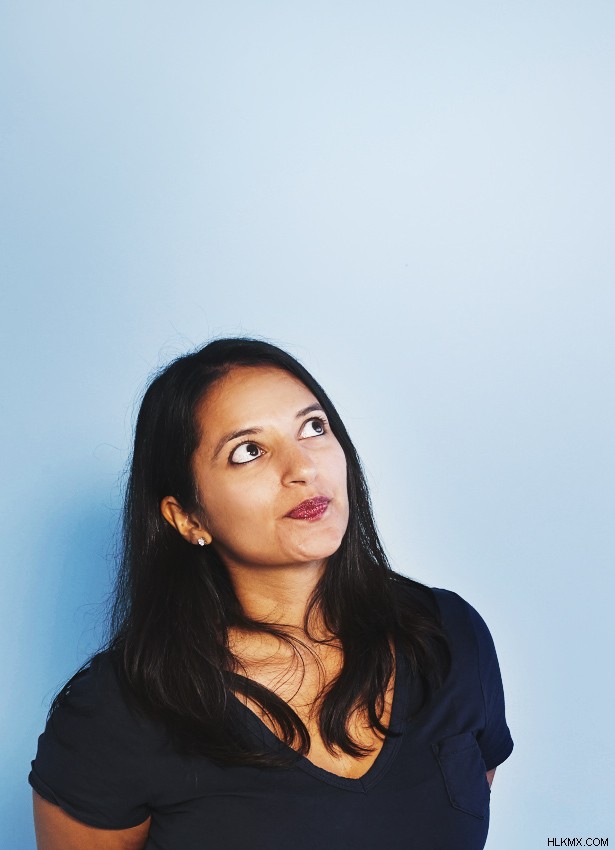
Inside, it’s serious business for the presenters, who deploy overhead projectors, cue cards and a personal cover letter, addressed, “Dear Evaluator.” “Welcome to 2016 geometry roundtables,” begins Reon, who notes that he’s into fashion and styling. Wearing a tie-dyed T-shirt with a collage of nuns, skeletons, centipedes, candles, President Obama and equilateral triangles, he presents his building-height struggle problem and his trigonometry work. “I remember the day Soni introduced the topic to us and I said, ‘Trigo what?’” But, as he continues in his letter, “my favorite topic of this semester turns out to be trigonometry, shockingly.”
Janet, in her letter, confesses, “Math and I haven’t always been on good terms. In middle school I used to despise math, I would get so annoyed and frustrated.” But she aces the roundtable, receiving a hug and high-five from Midha and the designation of a grade-10 geometry expert. “Even though I hate something, I’m still going to try,” she says.
In a sense, math is a metaphor for life. And the ability to solve problems and think independently is ultimately the lesson that Midha hopes to impart. “You struggle in math. You struggle in life,” said Midha, who by way of example often tells her students about her struggles with classical guitar. “It takes me forever sometimes to get through a piece. Because it’s so hard, and it sucks, and I don’t want to do it. But I keep going because I know I want a successful outcome, I know I want something really great at the end.”
The same applies to Midha’s goals as a teacher, a job she anticipates doing forever (this year she’s teaching calculus for the first time). “I’m not saying there aren’t days when I’m, like, ‘Uhhhh, I don’t want to do this.’ There are always days where we all kind of just need to take a break. But I’m an educator for life. No admin dreams here. Teacher for life, that’s the goal.”
THANK
On July 28, exactly a month into summer break, Channa Comer is in her Bronx apartment, hemmed in by plants, keepsakes from overseas research trips, a rack of immaculate vintage clothing she plans to sell online, and her two timid cats, Lucy Luu and Teena Turner. She’s sorting through boxes of quirky drawings and letters from some of the estimated 1,000 kids she’s taught over the past nine years. She has moving companies to interview and boxes to pack.
Comer waited until the last week of school to break the news to her students, not wanting it to be a distraction. She was leaving Baychester Middle School. She was done teaching.
“I love these kids. I love them,” she said. “But the system, I think, is extremely flawed, and I just need a break.”
In late August, she began her move to Maryland, where she could commute to the Department of Energy’s Office of Science in Washington, D.C. Months earlier, she had been accepted into the Albert Einstein Distinguished Educator fellowship program, where she hopes to gain a broader perspective on national educational policy.
Why do master math and science teachers, who are passionate about their content area and about developing their craft, who are creative, smart and engaging, and who adore their students — why do they quit teaching? Some have given all they can; they’re burned out from thinking and worrying about their students seven days a week, and from battling with school officials over resources, scheduling, a shortage of support, and an abundance of rigidity. Often these talented, driven individuals are lured away by career options that offer greater professional stature and higher pay. And some are just so naturally adventurous that they were always bound to move on. For Comer, it was all of the above.
“I’m really proud of the body of work that I’ve built as a teacher,” she said. “I don’t know how it will be to be in an office all day instead of in the classroom dealing with students and meltdowns and singing and dancing.” But there are some things about teaching she will not miss:“There needs to be much more flexibility, much more autonomy given to teachers to be able to create and teach to their passion so that they can engage students more deeply.”
By all accounts, including Comer’s, she was given extraordinary freedom and flexibility by her principal and school. “Channa’s earned the ability to do things her way,” said Principal Mangar. “Anytime she’s asked for something, or asked, ‘Can I try something?’ she’s outperformed expectations. I see myself as an offensive lineman — clear the way for her to be able to do good work.”
Still, she got dinged (by administrators other than Mangar) for transgressions like failing to write a learning objective on the board before every class. Comer says she did not have time for that after class periods were shortened from almost an hour to 45 minutes. And besides, her projects and learning objectives, which students recorded in their notebooks, took days or weeks to complete.
“It’s an incredible loss for her students and her school because through all her experiences and bringing them back to the classroom, whatever teacher comes next can’t bring what she brings,” said Michael Zitolo, who admits that the Einstein fellowship is a logical next step for his friend. He hopes her voice will be powerful at the national level, that she can push for fewer discrete standards and more “big-picture ones” like the Next Generation Science Standards.
“You can’t replace someone’s passion,” Mangar agreed. For his part, he hopes Comer will return after her 11-month fellowship ends. “I have a calendar reminder for when to contact her,” he said. “She’s always welcome. This will always be home.”
Even in the chaos of relocating across state lines and dealing with broken elevators, gridlock, a thunderstorm, moving company miscalculations, and other delays, Comer found time to pen a lengthy email criticizing the way science is currently taught:“I think we are approaching it wrong. I don’t think science at the lower levels should be separated into discrete subjects, but rather integrated and taught in the context of real life.”
She said she would be happy to discuss these ideas further, and that she’d be back in New York until August 24, after which she’d be in Maryland “for good.”
Editor’s note:Math for America receives funding from the Simons Foundation.
An excerpt of this article was reprinted on Wired.com.
